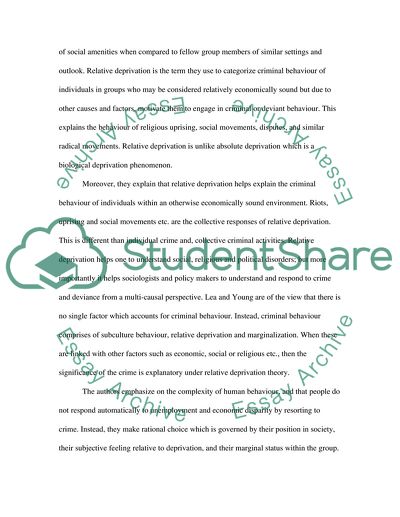Cite this document
(Relative Deprivation by John Lea and Jock Young Book Report/Review, n.d.)
Relative Deprivation by John Lea and Jock Young Book Report/Review. Retrieved from https://studentshare.org/psychology/1549056-assignment-1-criminology-report
Relative Deprivation by John Lea and Jock Young Book Report/Review. Retrieved from https://studentshare.org/psychology/1549056-assignment-1-criminology-report
(Relative Deprivation by John Lea and Jock Young Book Report/Review)
Relative Deprivation by John Lea and Jock Young Book Report/Review. https://studentshare.org/psychology/1549056-assignment-1-criminology-report.
Relative Deprivation by John Lea and Jock Young Book Report/Review. https://studentshare.org/psychology/1549056-assignment-1-criminology-report.
“Relative Deprivation by John Lea and Jock Young Book Report/Review”, n.d. https://studentshare.org/psychology/1549056-assignment-1-criminology-report.


